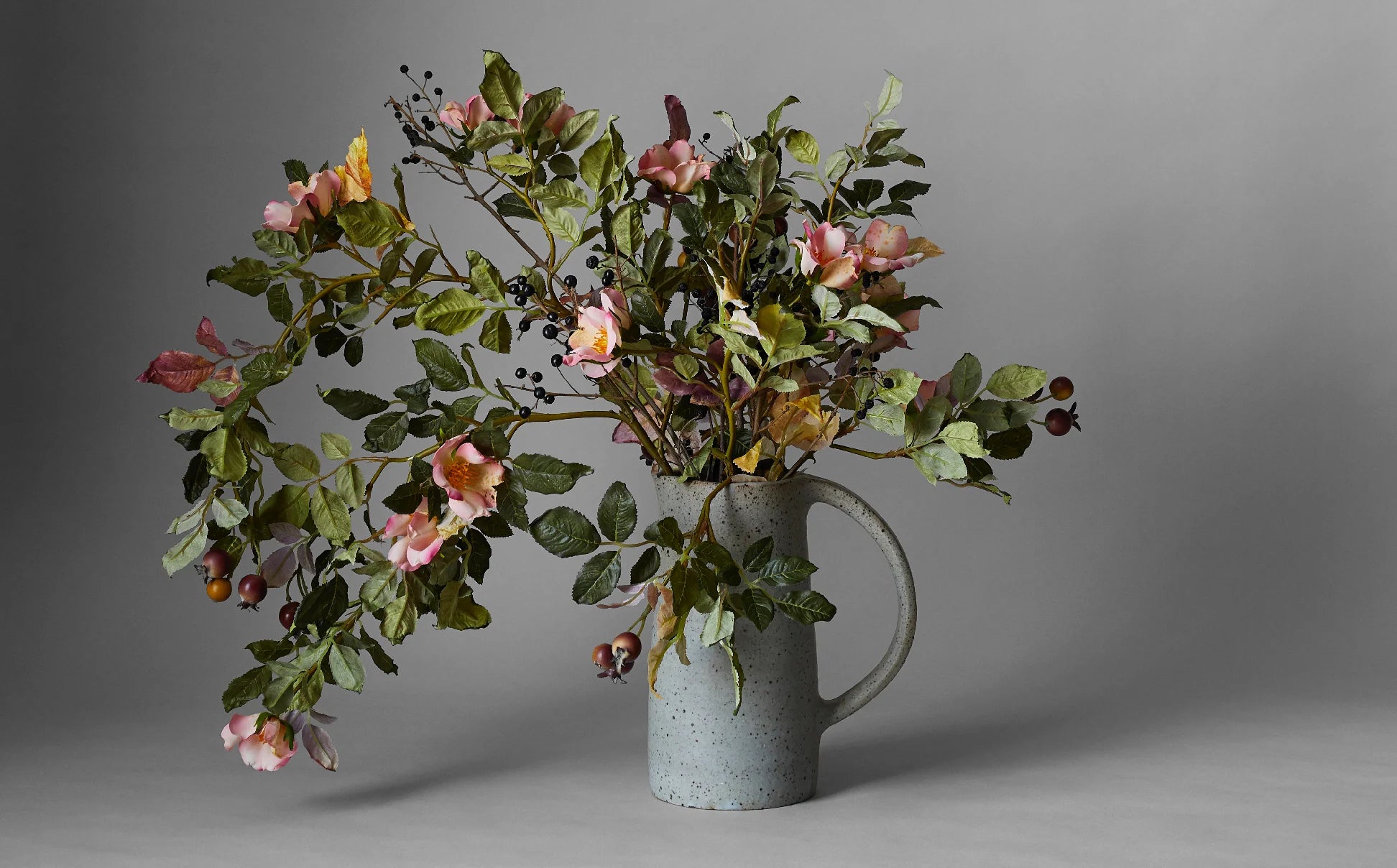Gifting has never been easier
Perfect if you're short on time or are unable to deliver your gift yourself. Enter your message and select when to send it.
Story by Mark Welsh / Photography by David Chow

The unfortunate irony of making faux botanicals is that the processes and materials used to emulate nature actually damage the environment. Bloomist aims to be a part of the solution rather than perpetuate the problem, which is why we designed and created a new collection of beautiful faux botanicals that are both remarkably realistic and environmentally friendly.
Bloomist is the first in the industry to introduce green faux botanicals. While faux botanicals aren’t dangerous to humans, the petroleum-based plastics and Styrofoam used in their manufacturing do not biodegrade and can contain harmful chemicals like Bisphenol A (BPA) and phthalates that will eventually enter our food chain. For the past two and half years (and counting) we’ve been working with our suppliers to develop EcoFaux™ botanicals that replace virgin and petroleum-based plastics with upcycled and recycled fabrics, essentially transforming trash that’s designated for landfills into beautiful objects for the home. These upcycled fabrics are made from single use plastic or PET bottles. We’ve also replaced former Styrofoam components with biodegradable papermaché.

"It's always useful to have some everlasting faux branches on hand to use as the structural basis for an arrangement. Mixing these with real flowers is an effective trick which I use when it's hard to get hold of really good florals," says Hilary Robertson.
Our supplier sources bioplastics from companies that carefully sort and separate their waste. In order to ensure the consistency of the material, these companies clean plastics prior to treatment, then clean them again after treatment. They only source from certified suppliers whose materials can all be traced.
Some of our EcoFaux™ botanicals are digitally printed to reduce wastage and reliance on dyeing processes that produce waste water. The balance are hand-dyed and any waste water goes through an in-house treatment process that is government approved and certified.

While not all our EcoFaux™ products are 100% plastic free, we’re working hard to find and develop alternate materials that are completely compostable and/or biodegradable and have zero impact on the planet. Until then, certain components of our collection include bioplastics made from 60-70% biomass and 30-40% virgin plastic. Biomass sources include agricultural by-products, and also plastic bottles. But because 100% biomass feels hard and doesn’t look natural, we also use virgin plastic for the parts that attach the leaves to the stems and the foliage backing that supports the flower and flower centers – at least for now.
– Alex Bates, Co-Founder
NOT ALL FAUX STEMS ARE CREATED THE SAME
We make two types of faux stems; one that’s injection-molded and made from bioplastics, and another that’s made of PET. For the bioplastics version, we aim to use above 50% recycled/upcycled material (the industry standard is 25%). For the PET version we replaced PVC tubing with less harmful PET tubing.
TRADITIONAL ARTISANAL HAND-MAKING METHODS MEET ECO-FRIENDLY, UPCYCLED MATERIALS
While we changed the components of our EcoFaux™ botanicals to be more environmentally friendly, we still rely on master artisans to hand make each specimen. These artisans study every detail of real botanicals, photographing and dissecting them to ensure that faux looks indistinguishable from real.
Subsequently, the mold making master studies the handmade piece, along with the photographs of the botanical, and then transfers the nuances, intricacies, and details onto the die-cutting molds and the compression/shaping molds. The many shapes and sizes of the petals, leaves, and stems dictate the number of molds required to make a botanical and hence add to the complexity of the item.
“We see beauty in all phases of nature. Faded blooms, bug holes, realistic textures and forms. Our intent is to capture the nuanced beauty of flowers with attention to realistic details and environmentally sensitive materials and processes. Perfectly imperfect, like nature.” - Alex Bates, co-founder

"Flower arranging is a huge part of an interior stylist's job: I go to the flower market every week and always drag back to NYC branches and flowers from my Connecticut garden. I find that most rooms are improved with a little wildness and natural texture," says Hilary Robertson, Author / Stylist.
“Amaranthus is one of my favorite flowers as I love the way it hangs idiosyncratically out of the vase challenging the florist to do something wild and dynamic and often asymmetric. I like it both mixed with other blooms and branches or on its own.”
Discover our realistic and environmentally-friendly faux botanicals.
Your Shopping Cart is Empty
Browse our latest collection or check your saved favorites to add more items to your cart.








Manage your profile, track your orders, and enjoy a seamless shopping journey with us.